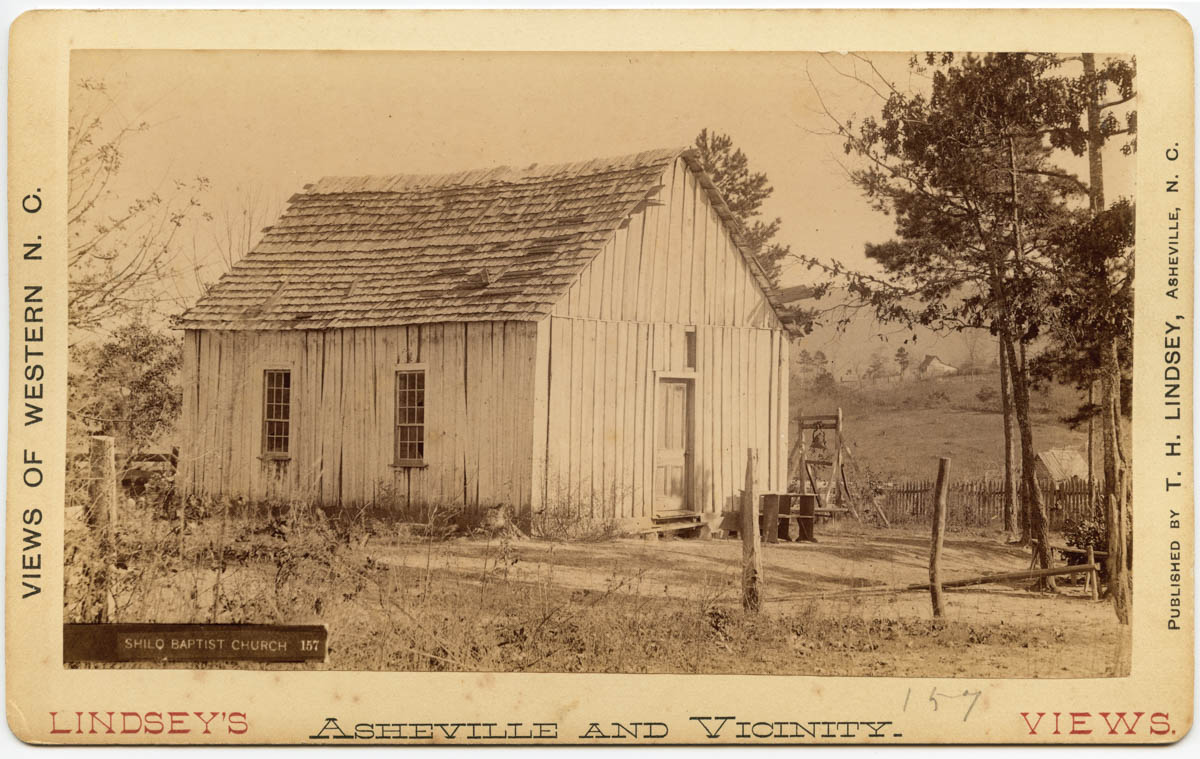
Shiloh Church. Photo courtesy of North Carolina Room, Pack Memorial Library
By John Ross
In the wake of the Civil War, tucked in the rumpled valley between Hendersonville and Sweeten Creek roads in South Asheville were three African-American communities: Rock Hill Colored Village, Petersburg and “New” Shiloh.
Rock Hill is, perhaps, the oldest, tracing its roots to Henry Stevens’ 1166-acre plantation, divided in 1870 to provide 30 houses and a church for former slaves. Petersburg, located near West Chapel and Sweeten Creek roads, held about 50 cabins.
The region was thriving in the 1870s. Tourists were returning, lured by the region’s climate, considered especially salubrious for sufferers of respiratory diseases. Among those who visited in 1888 were George Washington Vanderbilt II, who was haunted by worries of tuberculosis, and his mother Maria Louisa Kissam Vanderbilt, who suffered from chronic malaria.
As Vanderbilt stood on the knoll where he planned to place his mansion, he could see a smattering of small farms surrounding a log church on a low ridge to the north. The church was known as Shiloh. Acting through an agent, Vanderbilt purchased the church and land for $1,000. Families and the cemetery were moved to the eastern fringe of what became Biltmore Forest. He also relocated a second Shiloh church to the community. When that church burned in 1890, Vanderbilt and its pastor, the Rev. W. M. Logan, built a new one of brick. Outgrown by the community, it was razed in 1926 to make way for the current AME Zion Church.
Churches, including Rock Hill Baptist and Brooklyn Mission, have always been the center of the Shiloh community, says Sophie Dixon, president of the Shiloh Community Association. So, too, have gardens—first small farms and now the community garden on Hampton Street. Dixon’s family took root in Shiloh in the 1930s. “I was raised right down the street,” she says. “My grandparents had hogs, a cow, turkeys, chickens and a big plot of land where we grew vegetables. Everybody was family here. If you needed a cup of sugar, you could get a cup of sugar.”
Her friend Norma Baynes moved to Shiloh in 1970, and after a career as a nurse at Walter Reed Medical Center in Bethesda, Md., returned to Asheville in 1997. Since then the community has grown significantly. Today it numbers about 2,500 and is still predominantly African-American with a “huge group of retirees and seniors,” Baynes says. Increasing numbers of younger whites and Latinos are attracted by “nice, single-family homes available at moderate prices,” she adds.
Pressured by encroaching business and related development, Shiloh took charge of its future in 2001. Members of the community labored diligently for nine years assessing concerns and developing strategies for moving forward. The resulting Shiloh Community Plan 2025 has been incorporated into the city’s development plan. Topping priorities is a new resource center providing educational and health assistance to residents.
Shiloh’s community garden emphasizes the neighborhood’s continuing commitment to its youth. Youngsters working in the garden are teamed with Shiloh residents and student volunteers from area colleges and universities. The garden is the gateway to The Shiloh Legacy Art Trail, a component of the citywide initiative to memorialize Asheville’s enduring African-American history.
To learn more about Shiloh, visit ShilohNC.org. The Shiloh AME Zion Church is located at 95 Shiloh Road in Asheville, and features a mural depicting the community in the 1880s.






